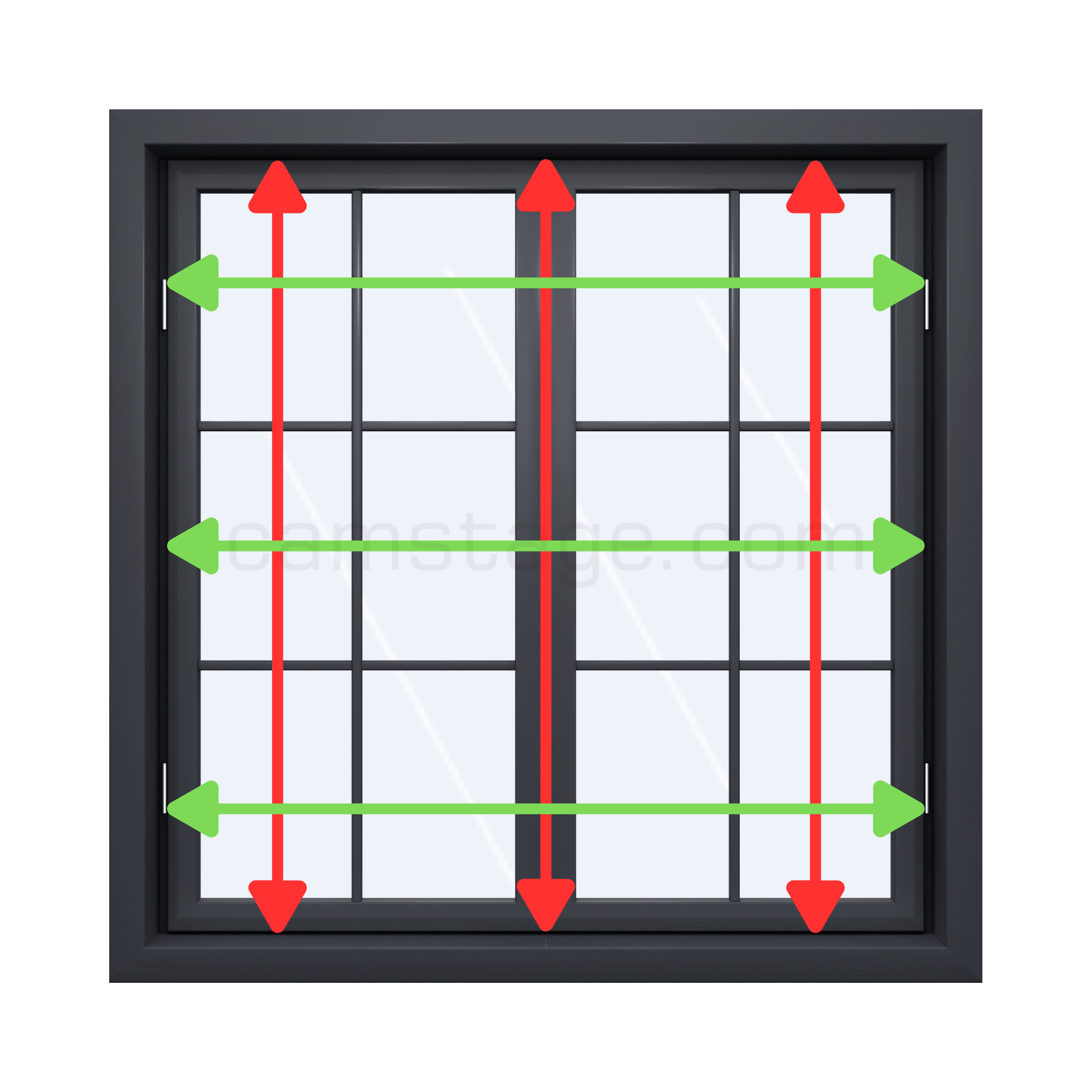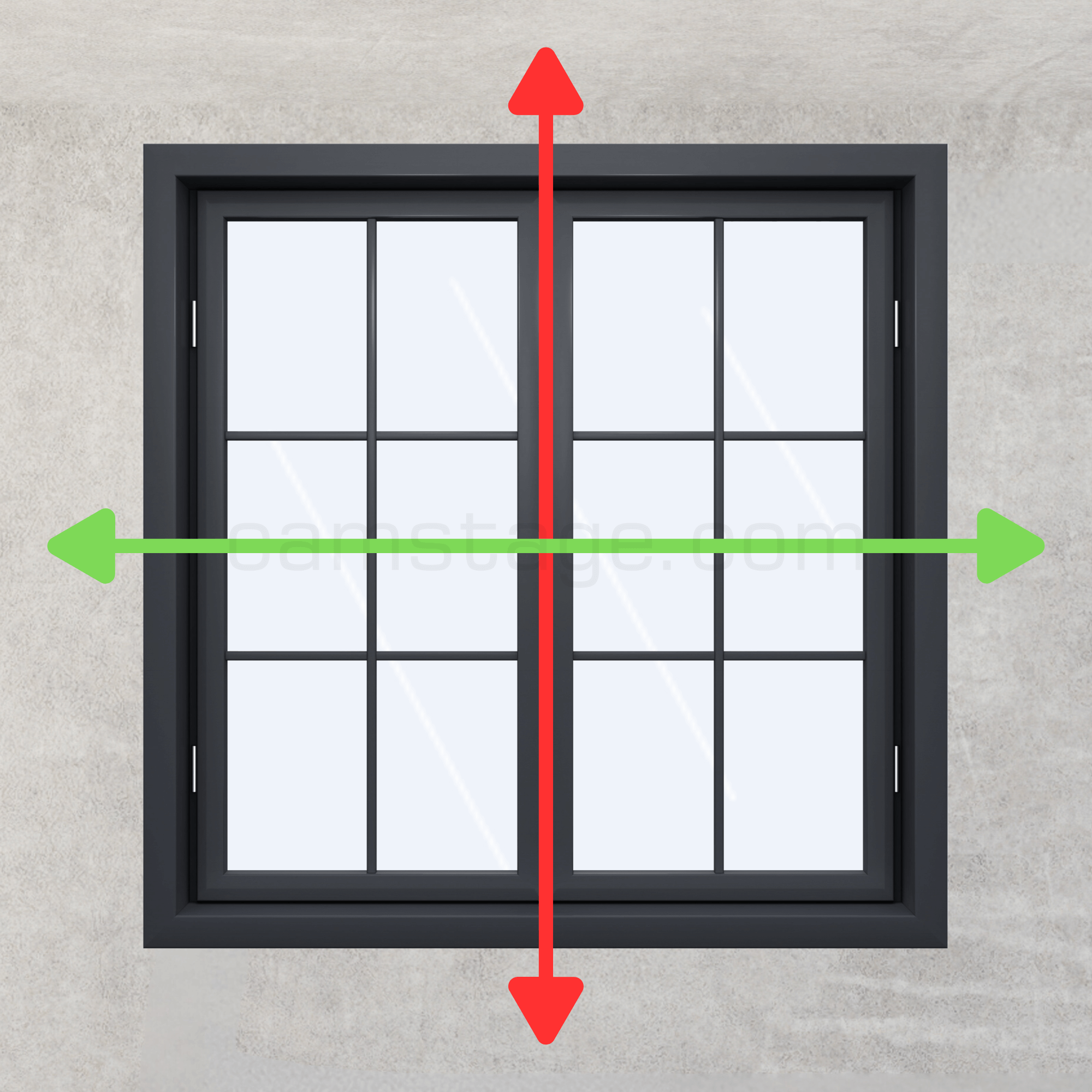Measuring Blinds
Deciding how to measure for blinds depends on whether they should be installed inside or outside a window recess. A window recess is formed when the window is not flush with the wall. The choice between installing inside and outside recess blinds depends on independent factors of each space. Factors such as visual preferences and the specific characteristics of the window and surrounding space. Using our handy guide below, measuring blinds is now a simple and easy task.
Inside recess blinds are made to fit within a window cavity, resting neatly within the window frame without any overlap onto the surrounding wall. Inside recess blinds are often chosen for a sleek and minimalist look, as they blend seamlessly with the window frame.
Outside recess blinds are mounted outside the window recess, typically on the wall or window frame. These blinds extend beyond the window frame and partially cover the surrounding wall. Outside recess blinds offer greater light blockage and privacy compared to inside recess blinds as they cover a larger area. They are suitable for windows where there is insufficient depth for inside mounting or when there’s a preference for a more prominent window treatment.
Measuring Blinds Inside a Window Recess
Inside Recess Measurement
- To measure yourself, make three separate measurements horizontally across the inner window recess: one at the top, another in the middle, and the third at the bottom. Then, take three vertical measurements: one on the left side, one on the right side, and one in the centre, similar to the illustration. This will allow us to gather the ‘smallest’ measurement.
- Use the diagram below on how to record your measurements. Please supply us with the narrowest measurement across and the shortest measurement down. Please do not try to make any allowances yourself, we will do this for you.

Please take note when measuring blinds for an inside recess fit:
The fabric width is typically about 30 mm narrower than the finished width of the blind. The finished width of the blind, also known as the 'actual blind size,' includes the total width between the pins at each end of the roller cylinder, including the brackets.
For example: if the 'actual blind size' width is specified as 100cm, the supplied blind will measure 100cm wide from pin to pin (within a few millimetres tolerance), while the fabric width will be approximately 3cm narrower, with 1.5cm on each side, totalling around 97cm.
Tips on How to Measure Blinds
- Where you can try to use a metal tape measure. Fabric tape measures may stretch and provide inaccurate measurements.
- Measure at the exact position where your blind will be installed to ensure clearance of all window catches, etc.
- Account for any tiles or other obstacles within the recess that may impact the final working width of the blind.
- Take measurements in centimetres and round each measurement to the nearest 0.1cm.
- Measure each window separately, even if they appear to be the same size.
Measuring Blinds Outside a Window Recess
Outside Recess Measurement
- When installing a Roller Blind outside a window recess, it is advised to have the blind extend a minimum of 7–10cm on both sides of the recess and ideally about 7 to 10cm above and below it, where possible. This ensures sufficient coverage of the window when the blind is closed.
- If the window sill extends beyond 5 cm from the recess, it may be necessary for the blind to terminate at the level of the window sill rather than extending below it. This will prevent any interference with the operation of the blind when in use.
- Use the diagram below on how to record your measurements. This will provide us with the ‘Actual Blind Size’ which we can use to manufacture your blinds.

Please take note when measuring blinds for an outside recess fit:
The fabric width is typically about 30 mm narrower than the finished width of the blind. The finished width of the blind, also known as the 'actual blind size,' includes the total width between the pins at each end of the roller cylinder, including the brackets.
For example: if the 'actual blind size' width is specified as 100cm, the supplied blind will measure 100cm wide from pin to pin (within a few millimetres tolerance), while the fabric width will be approximately 3cm narrower, with 1.5cm on each side, totalling around 97cm.
Tips on How to Measure Blinds
- Where you can try to use a metal tape measure. Fabric tape measures may stretch and provide inaccurate measurements.
- Take measurements in centimetres and round each measurement to the nearest full centimetre.
- Measure each window individually, even if they look the same size.
Expert Installation Services
Here at Camstage, our quality venue blinds and professional installation services stand unrivalled. Our commitment to providing custom-made, bespoke blind systems ensures that we always meet the specific needs of your venue. Whether you opt for manual or electric blinds, our team of engineers excel in all types of installations. Alongside our ability to accommodate your deadlines, we bring years of combined expertise in commercial space installations to every project. Our dedication to quality extends throughout every stage of the process. We provide comprehensive support in all areas, ensuring a seamless and efficient experience from beginning to end.
For more information about choosing the right blind system for your venue please have a look at our Knowledge Base blog Choosing The Right Blind For You.



